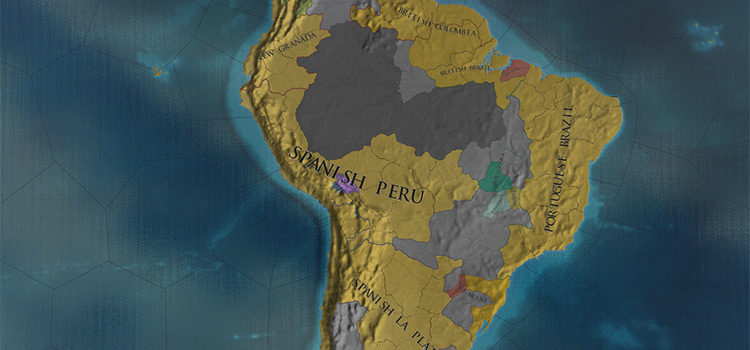Stellaris Fast Expansion Guide: When & How To Expand Quickly
This post may contain affiliate links. If you buy something we may get a small commission at no extra cost to you. (Learn more).
Fast border expansion in Stellaris can be an effective early-game strategy.
This can be done by making good use of your resources, proper exploration, outpost placement and effective fortification of your borders.
Your target when expanding quickly is to make sure you have all the space you need to move, grow, and build, while limiting any potential rivals’ ability to do the same.
Why Quick Border Expansion is Important
Having an excellent early game can pretty much set you up for the mid-game and the late game.
You can’t really do this if your territory is restricted. It’s still possible to have a good mid game, but your options are limited.
At the beginning of your playthrough, you start off with just one star system, which becomes your capital. The rest of the stars in the galaxy are prime real estate.
Each system has the potential to give you vast resources, strategic advantage, and even special event chains that can give you powerful artifacts.
Put simply, fast expansion in Stellaris is important because of one simple fact: If you don’t get the good star systems, then somebody else will.
Step 1: Exploration

Before you can expand, you’ll need to scout first. You need to know the lay of the land, and where the good systems are relative to your starting point.
This is where exploration and surveying come into play.
In order to explore or survey, you’ll need a crewed science ship. This is made easier because you already start with one in your capital system.
One isn’t enough though.
You will need to build more from your Shipyard, which you already start with in your first star system.
It’s not an exaggeration to say that science ships are the backbone of your exploration efforts. So, it’s important that you build a second or even a third or fourth one as soon as possible.
Assign your first science ship to survey the neighboring star systems around your capital. Surveying star systems will take time.
The second science ship should be sent exploring and mapping out further star systems and finding the quickest routes to them.
If you built a third one, they should be doing the same as the second science ship but going the opposite direction. If you have a fourth science ship, then use that to survey.
Some things to take note of:
- Chokepoints – These are star systems that are connected to multiple systems. Taking these points can make it easier to defend against enemy fleets by bottlenecking them.
- Systems with a large number of celestial bodies – More celestial bodies (planets, moons, black holes, asteroids) can potentially mean more resources.
- Habitable planets – Colonized planets are your economy’s bread and butter. More planets mean more buildings and more resources.
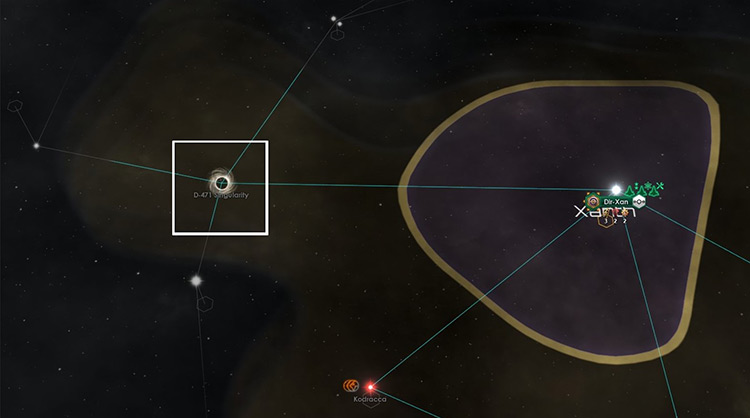
Step 2: Expansion
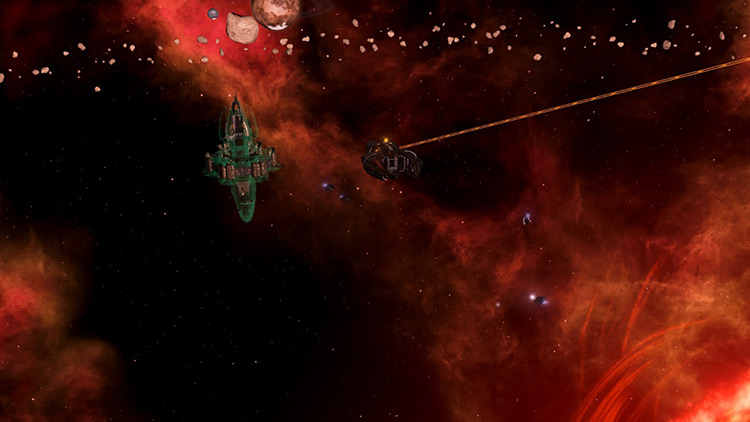
Once you’ve done your exploration and taken note of the points of interests, it’s time to expand your borders.
Of course, you don’t have to finish exploring first before you start expanding. While you are surveying and exploring, you can start expanding as soon as you have the resources.
Just like exploration and survey, you start the game with everything you’ll need to expand. In this case, a Construction Ship.
You can expand your borders simply by building Outposts in unclaimed star systems.
Note: You can only build Outposts in fully-surveyed star systems.
Don’t Overextend
It is tempting to build an outpost at a point of interest as quickly as possible without connecting them to your current borders.
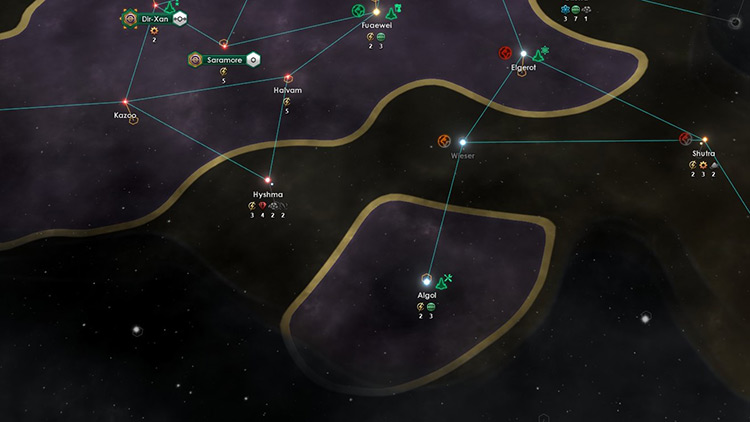
This is, however, very expensive, as the Influence cost of building an Outpost will go up by 75 for each hyperlane jump outside your border to the target system.
At the start of the game, it can be difficult to build up Influence Points, so it’s best to save them up as much as you can.
Leaving gaps within your borders also runs the risk of another empire blocking your access to these star systems by capturing the “corridor” between it and your border.
A better way to expand your borders is to simply find the quickest route between your target star system and your border. Then, annex the star systems one after the other.
This will let you annex the fewest star systems necessary to still reach your target system as fast as possible.
Step 3: Fortification

Once you’re happy with your expansion, or you’ve taken over your desired star systems, it’s time to fortify and consolidate your borders.
By this time, you might have made contact with a number of other alien civilizations.
One thing to remember is that the AI in Stellaris can be a bit unforgiving.
If they notice that you have weak borders, a weak fleet, or they feel they have an advantage over your empire, they will wage war on you.
For this reason, it’s best to start fortifying your borders. You can do this through your Outposts, or by improving your fleets.
Improving your Outposts
Outposts can be fitted with defense platforms. These platforms allow your Outposts to protect their individual star systems.
At the start, your Outposts can only support 3 platform slots. They can be upgraded to support more as you convert them into larger Star Bases.
Note: Your empire has a Star Base capacity. You can build more star bases beyond capacity, but every Star Base you build over it will cost significantly more to maintain.
You can increase your Star Base capacity any number of ways, including Technology and even just owning enough star systems. Every 10 systems you own increases your Star Base Capacity by 1.
Un-upgraded Outposts do not count towards this limit.
If you’ve built strong enough defenses, it is possible for your Outposts to repel enemy ships on their own.
This can eventually force your enemies to end a war in a status-quo, effectively giving you a defensive victory.
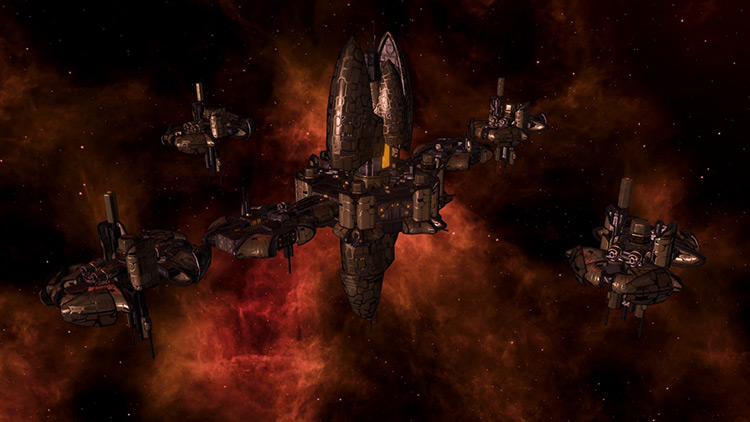
Improving your Fleets
Improving your fleets is pretty straightforward. Just build more ships!
You can build ships in Shipyards. You start with one in your capital, but you can also build more by upgrading your Star Base with the appropriate modules.
Of course, when you’re expanding your borders quickly, it’s very likely that you have few ships early on, or they are spread too thin.
Also, given that you have a small ship command capacity at the early game, you can’t field that many ships yet without sacrificing a lot of resources.
At the early game, it’s best to simply use your ships to support your Outposts.
Spread them out evenly around your empire. Prioritize stationing them in choke points or in star systems of strategic interest.
You should also upgrade their weapons and armor whenever you get new tech.
After you’ve researched technology that increases your ship capacity then you can slowly increase your fleet sizes. This will allow you to act more aggressively later on.
Step 4: Infrastructure
Once your borders are more secure, you should get ready for the mid-game.
At this stage, you can build infrastructure to help exploit the resources within your star systems.
You can use your Construction Ships for this:
- Select your Construction Ship.
- Right-click on a system you own
- Select either “Build Mining Stations” or “Build Research Stations”, whichever fits your needs, or whichever is available, as seen below.
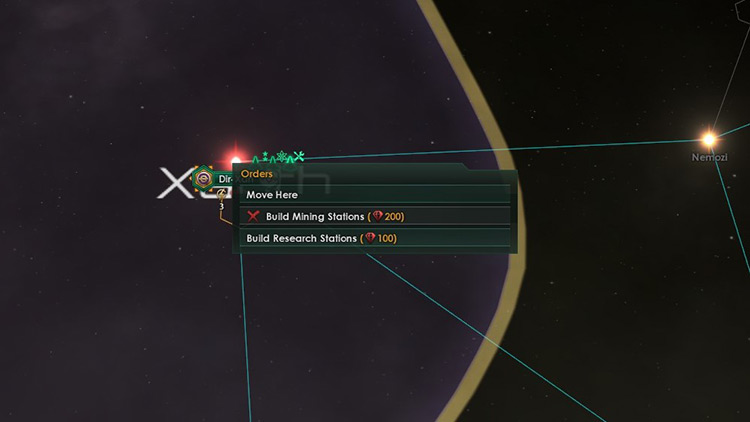
Aside from building Mining Stations and Research Stations, you should start colonizing any habitable planets within your borders. If you’ve already done so, you should begin developing them.
It is also a good idea to send out a second wave of border expansion. You can annex star systems that you’ve missed or didn’t prioritize during the first wave of expansion.
Either way, your fast expansion should be slowing down at this point as you get ready for the mid-game.
Whether you’re planning on being militaristic, peaceful, or focus on trade or research, you should be in a good position to do so.
Fast Expansion Tips
- Choose an Empire with the Xenophobe or the Fanatic Xenophobe traits. These traits lower your Star Base influence cost, making expansion cheaper.
- If you can choose a Ruler, get one with the Expansionist trait. This trait also lowers your Outpost build cost
- Take the Expansion tradition tree as early as possible. Each perk in this tree makes expanding your empire and your colonies quicker, cheaper, and easier.
- Also under Traditions, choose the Interstellar Dominion Ascension perk after completing any tradition perk tree.
- Change your Initial Border Status in your Empire Policies to “Closed”. This prevents any empire from entering your borders and expanding into your turf by default.
- You can add defensive platforms on your Outposts without upgrading them into Star Bases.



